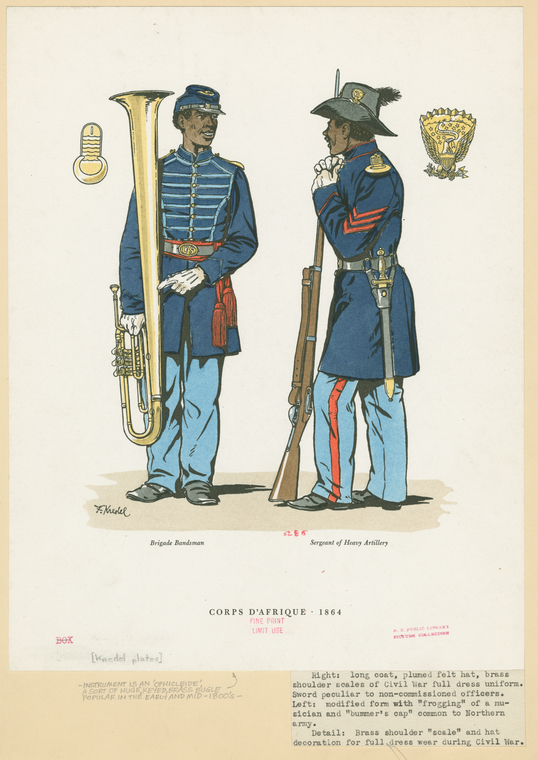Archives
United States Sanitary Commission Processing Project: Department of the Gulf
 Our archival processing staff continues to follow the U.S. Sanitary Commission on campaign during the Civil War, this time along the Gulf Coast. Melissa Haley reports on one man's journey in their service:
Our archival processing staff continues to follow the U.S. Sanitary Commission on campaign during the Civil War, this time along the Gulf Coast. Melissa Haley reports on one man's journey in their service:
Based in New Orleans, the USSC’s Department of the Gulf was founded in the spring of 1862, soon after that city came under Union control. Its scope of operations coincided with the territory covered by the Union’s Department of the Gulf — eventually including the entire Gulf Coast, from Brownsville, Texas on the Mexican border to Key West and the Tortugas in Southern Florida, as well as points inland, mostly in Louisiana.
The Sanitary Commission had several departments whose area of operation encompassed more than one state. The Department of the South, for example, based in Charleston, handled relief work in South Carolina, Georgia, and parts of Florida. But it was the Department of the Gulf that faced the special challenge of distributing much-needed supplies to Union forts and desolate outposts along 1,600 miles of craggy coastline.

 Edgerly’s supply distribution in Port Hudson to the 1st Regiment Corps d’AfriqueIn the fall of 1863, he was sent to Port Hudson, Louisiana to issue clothing, vegetables, bedding, and stationary to troops stationed there, including the Corps d’Afrique, originally formed with free people of color from Louisiana. Then it was on to Pensacola, Key West, and the Tortugas in Florida where Edgerly distributed supplies to forts, hospitals, and a gunboat. He spent Christmas in the Tortugas, 70 miles from the mainland.
Edgerly’s supply distribution in Port Hudson to the 1st Regiment Corps d’AfriqueIn the fall of 1863, he was sent to Port Hudson, Louisiana to issue clothing, vegetables, bedding, and stationary to troops stationed there, including the Corps d’Afrique, originally formed with free people of color from Louisiana. Then it was on to Pensacola, Key West, and the Tortugas in Florida where Edgerly distributed supplies to forts, hospitals, and a gunboat. He spent Christmas in the Tortugas, 70 miles from the mainland.

 Edgerly’s supply distribution in Brownsville, for “Soldiers Sick in Hospital”In early 1864, Edgerly traveled along the Texas coast, stopping in Indianola, Port Isabel, Brazos Santiago, and Brownsville, near the Mexican border. At Indianola, he requested “15 foot-balls” and “the same number of base balls with bats, and the rules of the game” be sent, diversion for isolated troops. At Brownsville, where Edgerly spent two months manning a temporary supply depot, he asked for mosquito netting to combat the flies, which were “very annoying especially to those sick with the small pox.” The Confederacy used Brownsville to smuggle cotton to European ships in Mexico; the Union Army was sent to the border town to put an end to the smuggling. Edgerly reported the town to be “a contemptible, half-civilized, God forsaken country,” but added he would “try to make the best of it.” He spent his free time making settees for the Post Hospital, using cotton and empty supply boxes.
Edgerly’s supply distribution in Brownsville, for “Soldiers Sick in Hospital”In early 1864, Edgerly traveled along the Texas coast, stopping in Indianola, Port Isabel, Brazos Santiago, and Brownsville, near the Mexican border. At Indianola, he requested “15 foot-balls” and “the same number of base balls with bats, and the rules of the game” be sent, diversion for isolated troops. At Brownsville, where Edgerly spent two months manning a temporary supply depot, he asked for mosquito netting to combat the flies, which were “very annoying especially to those sick with the small pox.” The Confederacy used Brownsville to smuggle cotton to European ships in Mexico; the Union Army was sent to the border town to put an end to the smuggling. Edgerly reported the town to be “a contemptible, half-civilized, God forsaken country,” but added he would “try to make the best of it.” He spent his free time making settees for the Post Hospital, using cotton and empty supply boxes.

After his Brownsville stint, Edgerly was back in Louisiana in the spring, providing supplies for Union troops in Alexandria recovering from the failed Red River Campaign. On one supply run up the Mississippi from New Orleans, his ship was shot at by Confederates on the river bank for an hour and twenty minutes: “Our well-filled boxes of Sanitary stores were immediately converted into breastworks; every available man on board from the Captain down to the boot-black, armed with a loaded musket, and one artillery heavily charged with grape and canister, wheeled into position beside which the gunners, lanyard in hand, stood ready at a moment’s notice to 'let slip the dogs of war.'”
George Edgerly survived enemy fire, multiple Gulf of Mexico and Mississippi River voyages, and unfavorable and isolated conditions in remote backwaters, but, sadly, he did not survive the war. In June of 1864, he reported from Vicksburg, Mississippi: “Your correspondent here much against his wishes was compelled to yield to the force of circumstances and himself to become an inmate of the hospital, a victim to that popular juvenile malady known as the measles”—contracted while working onboard a hospital steamer. He continued to report on supply distribution from his hospital bed.
![Planters Hotel [location unidentified]., Digital ID 1150174, New York Public Library Planters Hotel [location unidentified]., Digital ID 1150174, New York Public Library](https://images.nypl.org/?id=1150174&t=w)
George G. Edgerly’s untiring efforts in the Department of the Gulf benefited countless soldiers from Texas to Florida.  Researchers can explore his work, as well as the work of numerous such dedicated relief agents, when the US Sanitary Commission records become available in the spring of 2013.
Researchers can explore his work, as well as the work of numerous such dedicated relief agents, when the US Sanitary Commission records become available in the spring of 2013.
Read E-Books with SimplyE
 With your library card, it's easier than ever to choose from more than 300,000 e-books on SimplyE, The New York Public Library's free e-reader app. Gain access to digital resources for all ages, including e-books, audiobooks, databases, and more.
With your library card, it's easier than ever to choose from more than 300,000 e-books on SimplyE, The New York Public Library's free e-reader app. Gain access to digital resources for all ages, including e-books, audiobooks, databases, and more.
If you don’t have an NYPL library card, New York State residents can apply for a digital card online or through SimplyE (available on the App Store or Google Play).
Need more help? Read our guide to using SimplyE.